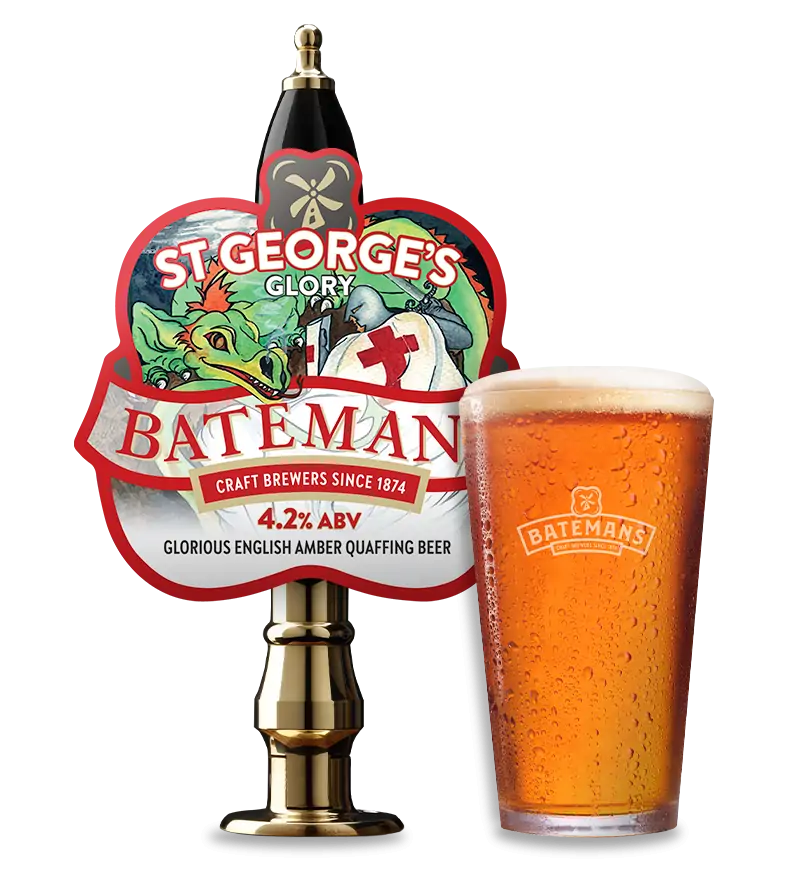A Beer to Slay any Thirst
This year, St George’s Day falls on Wednesday (23rd April – obviously), and in keeping with Batemans’ long-standing tradition of producing seasonally relevant beers, we will once again be brewing St George’s Glory. This popular beer will be available at most Batemans pubs and selected free trade outlets throughout April.
St. George’s Day, honours England’s patron saint, renowned for his legendary battle against a dragon, a symbol of good triumphing over evil. This day has been observed since the 14th century, reflecting England’s rich cultural heritage.
In tribute to this tradition, Batemans Brewery offers ‘St. George’s Glory,’ a distinctive golden ale crafted to embody the spirit of the occasion. This 4.2% ABV beer is made using Fuggles and Bobek hops, complemented by pale and crystal malts, resulting in a balanced flavour profile with subtle floral notes.
‘St. George’s Glory’ is available during April, offering beer enthusiasts a chance to raise a glass to St. George. Whether enjoyed at a local pub or during community events, this ale provides a flavourful connection to England’s storied past.
First brewed over twenty five years ago in 1999, our St George’s Glory beer was designed to represent all things English. It is described as “the perfect pour to celebrate the English national saint’s day.”
St George’s Glory Tasting Notes
Glorious light amber beer brewed with English Maris Otter malt, the soft bitterness of English Fuggles hops giving a clean, zesty aroma. The perfect way to celebrate St George’s Day!
St George’s Glory offers a zesty, clean flavour, appealing to those who enjoy light, easy-drinking session beers.
Batemans Brewery’s ‘St. George’s Glory’ stands out as a fitting tribute to the enduring legacy of St. George.
Click here for further information on the beer including taste profile, cyclops etc...



